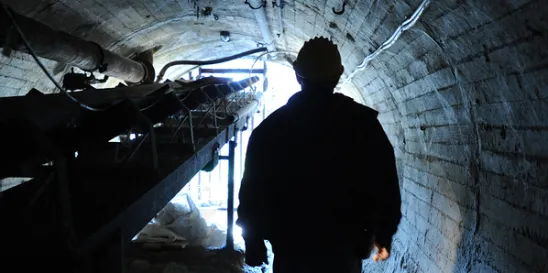A Minnesota federal court dismissed a tunnelling contractor’s differing site condition claim because notice of the condition was given eight days after the conditions were first observed whereas the contract required notice within three days (see Engineering & Construction Innovations, Inc. v. Bradshaw Construction Corp.). The project at issue involves installation of a water main through the sandstone beneath the Mississippi River in the City of Minneapolis using a construction technique called microtunneling. Microtunneling is a form of mechanized tunnel construction that uses a remote-controlled microtunnel boring machine to construct a tunnel and simultaneously install pipe casing with minimal disruption to the ground above. The City of Minneapolis awarded the prime contract to Engineering and Construction Innovations (ECI), who in turn subcontracted the microtunneling work to Bradshaw Construction Corporation.
Bradshaw began tunneling on November 7, 2019. That same day groundwater unexpectedly rushed into the tunnel and flooded the tunneling equipment. Eight days later Bradshaw sent a letter putting ECI on notice of a differing site condition claim due to excessive groundwater. Unfortunately for Bradshaw, the contract required notice of a different site condition claim within three days after the first observance of the allegedly differing condition. As one Bradshaw employee commented in an internal email sent around this time:
“I just found in the Supplementary Conditions there is a 3 day notice provision for a DSC claim. Why do you think it is 14 days? I hope so we arguably have lost any claim rights for this flood that we may have had.”
ECI denied the excess groundwater claim, as well as a second DSC claim for higher-than-expected jacking loads.
In the ensuing litigation, the court held that Bradshaw failed to give timely notice of the excess groundwater condition and rejected the claim. Even though Bradshaw had given notice within eight days, that was not timely under the contract provision requiring notice within three days as recognized by the internal Bradshaw email quoted above and in the court’s decision. The court also rejected Bradshaw’s other DSC claim for higher-than-expected jacking loads. While Bradshaw had arguably given timely notice of that claim, Bradshaw could not establish that the conditions were materially different than what was affirmatively represented in the Geotechnical Baseline Report (as required to succeed on a Type I DSC claim under Minnesota law). Both DSC claims were therefore dismissed.
In addition to its DSC claims, Bradshaw also asserted a breach of warranty claim for defective specifications. Under Minnesota law, “[w]here one party furnishes specifications and plans for a contractor to follow in a construction job, he thereby impliedly warrants their sufficiency for the purposes implicit therein and whether the builder has been damaged in proceeding with the work in reliance on such an implied warranty or whether he was damaged in relying on the warranty in making his bid, he may recover.” Even though the contract provided that Bradshaw was solely responsible for its means and methods, the project manual provided the manner that Bradshaw was required to perform its work. Viewing the evidence in the light most favorable to Bradshaw, the court found that Bradshaw could potentially establish that the plans were defective and allowed the breach of warranty claim and others to proceed to trial.




 />i
/>i

